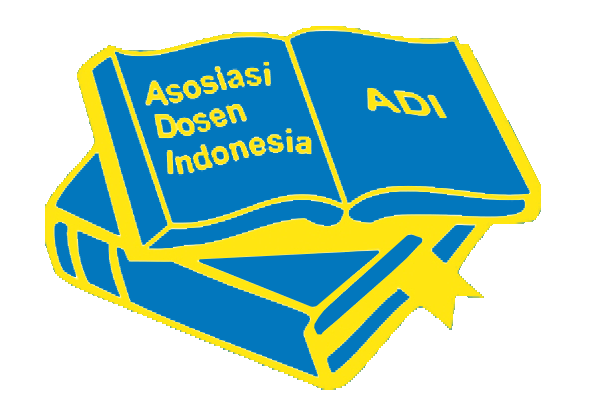Influence of With Pair Jump Rope Training and Ladder Drill Model on Kids Athletic Improvement
Abstract
This study aims to develop a variety of athletic sports learning through pair jump rope and ladder drill training models to improve the kids athletics of elementary school students. The method used was an experimental method through a quantitative approach with a randomized group-pretest-posttest design research design. The population was 32 elementary school students with a sample of grade IV and V students selected by stratified proportional sampling, divided into two groups, each given a pair jump rope model (X1) and ladder drill model (X2). The data collection technique used the Kids Athletics Test IAAF instrument which was analyzed using the t and anava tests at the sig level. α = 0.05. The results of the analysis t count > t Sig..0.05 ( > sig 0.05) means that the pair jump rope training model and the ladder drill training model can improve the kids athletic abilities of elementary school students. Mean while, the analysis of variance test results for each element of kids athletic obtained Fcount > Fsig.0.05 ( > sig 0.05), which means that there is a significant difference between the paired jump rope athletic training model and the ladder drill training model to improve the kids athletic of elementary school students.
References
Achmadi, & Lailiyyah, L. (2018). Pengaruh Permainan Lompat Tali Terhadap Kemampuan Motorik Kasar Anak Kelompok B Tk Kartika Iv-9 Raider Surabaya. Wahana, 70(1), 63–70. https://doi.org/10.36456/wahana.v70i1.1570
APSO. (2012). Kid’s Atletics. Jakarta: Pengurus Besar PASI.
Chandrakumar, N., & Ramesh, C. (2015). Effect of Ladder Drill and SAQ Training on Speed and Agility Among Sports Club Badminton Players. Internat Ional Journal, 1(12), 527–529.
Gevat, C., Taskin, H., Arslan, F., Larion, A., & Stanculescu, G. (2012). The Effects of 8-Week Speed Training Program on The Acceleration Ability and MaximumSspeed Running at 11 Years Athletes. Collegium Antropologicum, 36(3), 951–958.
Ghosh, S.S., & Majunder, S. (2012). A Comparative Study on Agility and Dynamic Blance of Football Volleyball and Hockey Players. International Journal of Health, Physical Education and Computer Science in Sports, 8(1), 48–50.
Gozzoli, C., Locatelli, E., Massin, D., Bjorn, B. (2012). IAAF Kids’ Athletics. A Team Event For Children. IAAF.
Harsono. (2015). Kepelatihan Olahraga, Teori dan Metodologi. In Jakarta:Remaja Rosdakarya.
Jamil, S. A., Aziz, N., & Hooi, L. B. (2015). Effects of Ladder Drills Training on Agility Performance. International Journal of Health, Physical Education and Computer Science in Sports, 17(1), 17–25.
Kamtini, & Kaban, D. (2016). Pengaruh Permainan Tradisional Lompat Tali Terhadap Perkembangan Motorik Kasar Anak Usia 5-6 Tahun Di TK Santa Lusia Medan T/A 2015/2016. Bunga Rampai Usia Emas, 2(1), 60–77.
Kusnanik, N. W., & Rattray, B. (2017). Effect of Ladder Speed Run and Repeated Sprint Ability in Improving. Acta Kinesiologica, 11(1), 19–22.
Kusuma, A. C. A., & Kardiawan, I. K. H. (2017). Effect of Ladder Drill Exercise on Speed, Surrounding, and Power Leg Muscle. E-Jurnal Physical Education, Sport, Health and Recreation, 6(3), 193–196. https://doi.org/10.15294/active.v6i3.17721
Padmaswari, G. A. D., Wirya, I. N., & Magta, M. (2017). Penerapan Bermain Lompat Tali Untuk Meningkatkan Kemampuan Motorik Kasar Kelompok A TK Tunas Gama School. Jurnal Pendidikan Anak Usia Dini, 4(2), 1–10. https://doi.org/doi.org/10.23887/paud.v4i2.7811
Pathurohman, M., & Wibowo, R. (2017). Meningkatkan Hasil Belajar Lompat Melalui Aktivitas Lompat Tali dengan Penerapan Gaya Practice. Jurnal Terapan Ilmu Keolahragaan. https://doi.org/10.17509/jtikor.v2i2.7985
Petros, B., Ploutarhos, S., Vasilios, B., Vasiliki, M., Konstantinos, T., Stamatia, P., & Christos, H. (2017). The effect of IAAF Kids’ Athletics on the physical fitness and motivation of elementary school students in track and field. Journal of Physical Education and Sport, 16(3), 883–896. https://doi.org/doi.org/10.7752/jpes.2016. 03139
Pratama, N. E., Mintarto, E., Kusnanik, N. W., & Pratama1, N. E. (2018). The Influence of Ladder Drills And Jump Rope Exercise Towards Speed, Agility, And Power of Limb Muscle. IOSR Journal of Sports and Physical Education (IOSR-JSPE, 5(1), 22–29.
Putra, R. N., & Bafirman, B. (2020). Efek Model Kids’ Athletics Memberikan Nilai Tambah Dalam Meningkatkan Konsep Diri Siswa. Jurnal SPORTIF : Jurnal Penelitian Pembelajaran, 6(1), 69–79. https://doi.org/10.29407/js_unpgri.v6i1.13624
Rajendran, K. (2016). Effect of Ladder Training on Agility among College level Football Players. International Journal of Recent Research and Applied Studies, 3(4), 99–101.
Rumini, R. (2014). Pembelajaran Permainan Kids Atlhletics Sebagai Wujud Pengembangan Gerak Dasar Atletik Pada Anak-Anak. Journal of Physical Education Health and Sport, 1(2), 98–107. https://doi.org/10.15294/jpehs.v1i2.3208
Samsiar, N. (2014). Pengaruh Permainan Lompat Tali terhadap Kemampuan Motorik Kasar Anak di Kelompok B RA Al-Muhajirin Palu. Bungamputi, 2(9), 772–782.
Sari, P. . (2015). Upaya Meningkatkan Kemampuan Motorik Kasar Melalui Lompat Tali Pada Kelompok A TK ABA Di Ngabean I Tempel Sleman. Jurnal Pendidikan Guru PAUD, 5(4), 1–9.
Sethu, S. (2014). Comparison of plyometric training and ladder Training on Sprinting Speed, Vertical Explosive Power and Agility. Journal of Recent Research and Applied Studies, 1(1), 59–63.
Sugiyono. (2017). MetodePenelitian Kuantitatif, Kualitatif dan R&D. Bandung: PT Alfabet.
Syamsidah. (2018). Development of Learning Tools of Problem-based Learning to Enhance Scientific Thinking Skills. Journal of Physics: Conference Series, 1028 (1). https://doi.org/10.1088/1742-6596/1028/1/012086
Theodora, W. (2013). Memahami Perkembangan Anak. Jakarta: PT Indeks.
Copyright (c) 2020 Jp.jok (Jurnal Pendidikan Jasmani, Olahraga dan Kesehatan)

This work is licensed under a Creative Commons Attribution-ShareAlike 4.0 International License.
Authors retain copyright and grant the journal right of first publication with the work simultaneously licensed under a Creative Commons Attribution 4.0 International License that allows others to share the work with an acknowledgement of the work's authorship and initial publication in this journal.





.png)






